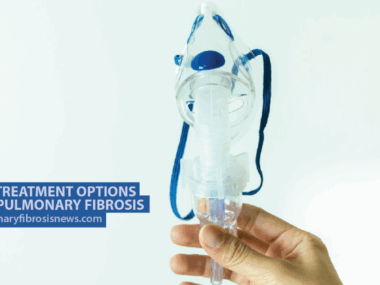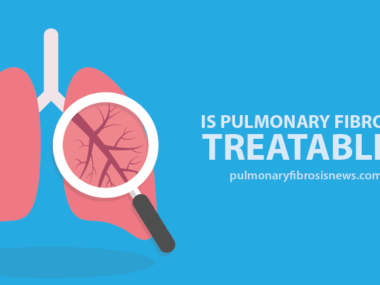GRI-0621 may reduce scarring in idiopathic pulmonary fibrosis: Trial
Interim analysis of biomarker data yields encouraging signs
Written by |

Treatment with GRI Bio‘s investigational oral therapy GRI-0621 appears to reduce markers of fibrosis, or scarring, in people with idiopathic pulmonary fibrosis (IPF), according to an interim analysis of biomarker data from an ongoing Phase 2a clinical trial.
“These 6-week interim biomarker data, while early and based on a small subset of participants, continue to be encouraging,” Marc Hertz, PhD, CEO of GRI Bio, said in a company press release.
Measures of lung function also assessed
IPF is marked by fibrosis in the lungs, which makes it harder for the lungs to take in oxygen and leads to symptoms such as shortness of breath. GRI-0621 is designed to reduce the activity of type 1 invariant natural killer T-cells, a kind of immune cell that’s thought to play a role in driving fibrosis in IPF.
An ongoing Phase 2a clinical trial (NCT06331624) is testing GRI-0621, at a dose of 4.5 mg/day, against a placebo in people with IPF. As of March, the trial was still recruiting participants at sites in the U.S., U.K., and Australia.
The study’s main goal is to assess the safety and tolerability of the experimental therapy. A recent safety analysis from the first 24 patients found that, after six weeks, the treatment was generally well tolerated.
The Phase 2a study also is assessing biomarkers and measures of lung function. In the new analysis, researchers at GRI looked at biomarker data from the first 24 patients after six weeks. The scientists specifically assessed markers of fibrogenesis and fibrinolysis — that is, the formation of scar tissue and the degradation of the fibrin network of a blood clot, respectively.
Data ‘provide further insight into the full potential of GRI-0621’
This analysis was blinded, meaning the researchers did not know which patients were taking GRI-0621 and which were on the placebo. The results generally indicated there was more fibrinolysis and less fibrogenesis — which is what would be expected if GRI-0621 was indeed reducing fibrosis as designed.
Changes in the extracellular matrix (ECM) — the network of proteins and other molecules that provides support to cells, whose components accumulate excessively in fibrosis — also suggested a potential beneficial effect of GFI-0621 treatment, including the induction of a potential repair mechanism.
“Although the study remains blinded and we do not yet have visibility into individual patient data, background anti-fibrotic use, or demographic distribution, we are seeing promising directional signals with GRI-0621, including reduced fibrogenesis, increased [fibrinolysis], and improvement in the remodeling rate, or net changes in ECM formation versus resolution,” Hertz said, noting that these data are consistent with earlier interim findings.
Hertz added that the data “provide further insight into the full potential of GRI-0621.”
Taking the findings together, the trial’s independent data monitoring committee — made of external experts who review findings to ensure participant safety — has recommended the study to continue as planned. The committee noted that more data are needed to confirm the anti-fibrotic effect of GRI-0621 and to assess pulmonary function improvement.
Topline data from the Phase 2a clinical trial are expected in the third quarter of this year, and GRI is planning to announce interim data on lung function in the next few weeks.








